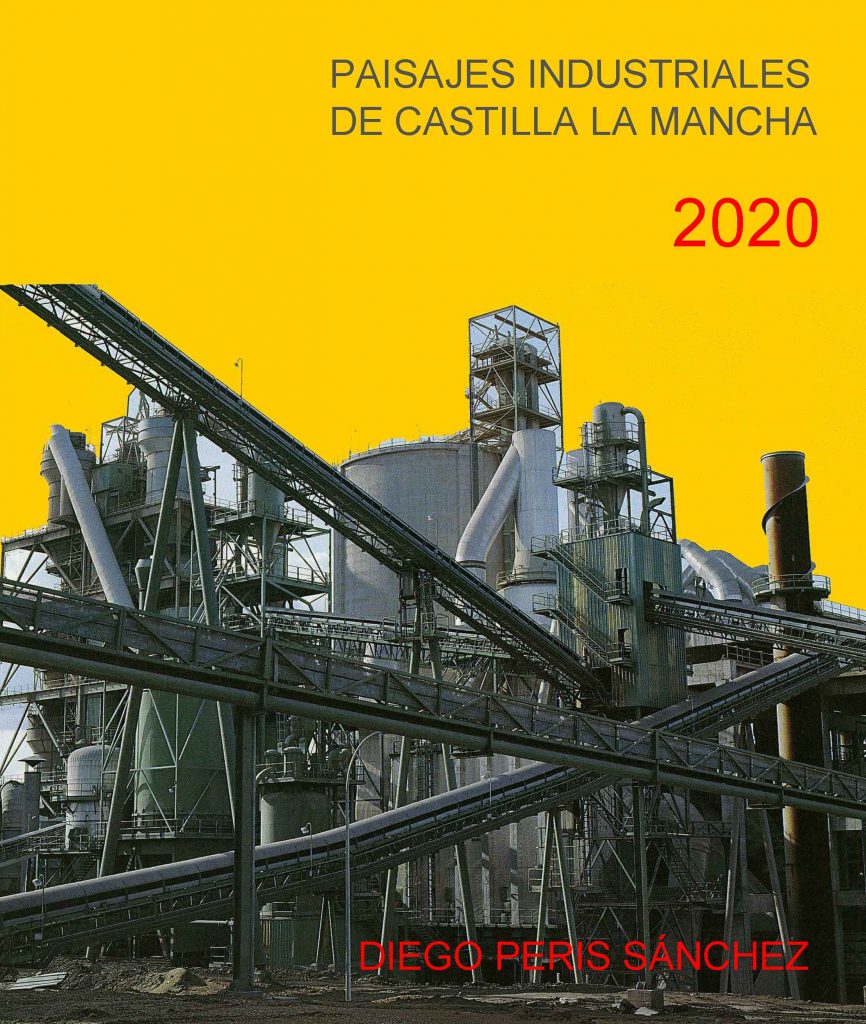PAISAJES INDUSTRIALES CLM 2020

En 1995 la Junta de Comunidades de Castilla-La Mancha publicaba el libro “Arquitectura para la industria en Castilla-La Mancha”.
Un recorrido por las principales instalaciones industriales de la comunidad autónoma que suponía el acercamiento a una realidad que, en ese momento, era poco valorada en el contexto del patrimonio histórico.
El patrimonio industrial ha entrado a formar parte de la reflexión sobre el patrimonio histórico en fechas recientes. En 1978 nacía el TICCHIC (The International Committee for the conservation of the industrial Heritage) y en 1999 INCUNA (Industria Cultura Naturaleza). El año 2000 el Ministerio de Cultura iniciaba su trabajo con el Plan de Patrimonio industrial.
Un patrimonio que debemos conocer en su desarrollo histórico, en sus condiciones técnicas, en la arquitectura que ha generado, en las obras de ingeniería y en el trabajo de las personas que desarrollan su actividad en este ámbito. Por ello el concepto de paisaje industrial que abarca esta realidad de una forma amplia es una buena forma de aproximación al patrimonio industrial. Los paisajes industriales de Castilla-La Mancha comprenden ese amplio conjunto de realidades que conforman el patrimonio industrial. Una visión que partiendo de la realidad material de los procesos y producciones valora la huella del trabajo de muchas personas que forma parte de nuestro territorio actual. Y por ello este patrimonio es esencialmente el patrimonio del trabajo. Y junto a esa visión global desde el punto de vista de los contenidos también una visión temporal amplia que abarca desde las primeras actividades en las que se usan artificios, ingenios para la realización de las tareas del hombre hasta las actuales tecnologías de la energía y las comunicaciones.
El año 2013 la publicación “Paisajes industriales de Castilla-La Mancha” renovaba la información y contenidos del libro de 1995 para reconocer esta realidad amplia en su tiempo de desarrollo y en sus contenidos. Un avance en el conocimiento del patrimonio industrial que esperamos nos conduzca a un mejor aprecio de este y a abordar de forma inteligente su conservación, cuando sea conveniente, y su mantenimiento o posible reutilización.
Paisajes industriales de Castilla-La Mancha quiere recoger el trabajo de todos los que durante estas últimas décadas han investigado y documentado este rico patrimonio propiedad y responsabilidad colectiva decía en aquel momento. Ahora Paisajes industriales de Castilla-La Mancha 2020 actualiza la información del trabajo de 2013, incluye nuevos datos actualizados y algunas nuevas referencias y una documentación gráfica de mejor calidad. Un intento de valorar y conocer el patrimonio industrial de una comunidad autónoma considerada tradicionalmente como espacio de agricultura y medio natural, pero, en la que la realidad industrial ha ido adquiriendo un protagonismo importante.
In 1995 the Community Board of Castilla-La Mancha published the book Architecture for the industry in Castilla-La Mancha.
The book presented the main industrial facilities of the autonomous community that involved an approach to a reality that, at that time, was undervalued in the context of historical Heritage.
Industrial Heritage has recently become part of the reflection on historical Heritage. In 1978 the TICCHIC (The International Committee for the conservation of the industrial Heritage) was born and in 1999 INCUNA (Industry Culture Nature). In 2000 the Ministry of Culture began its work with the Industrial Heritage Plan.
A heritage that we must know in its historical development, in its technical conditions, in the architecture it has generated, in the engineering works and in the work of the people who carry out their activity in this field. For this reason, the concept of industrial landscape that broadly encompasses this reality is the right way of approaching industrial Heritage. The technical aspects of Castilla-La Mancha comprise this broad set of truths that make up the Industrial Heritage. A vision that based on the material fact of processes and productions values the footprint of the work of many people who are part of our current territory. And so this Heritage is essentially the Heritage of work. And along with this global vision for the contents, also a broad temporal view that ranges from the first activities in which use devices, devices for the performance of human tasks to current energy technologies and communications.
In 2013 the publication “Industrial landscapes of Castilla-La Mancha” renewed the information and contents of the 1995 book to recognize this broad reality in its development time and its contents. An advance in the knowledge of the industrial Heritage that we hope will lead us to a better appreciation of it and to intelligently approach its conservation, when appropriate, and its maintenance or possible reuse.
Industrial landscapes of Castilla-La Mancha wants to collect the work of all those who during these last decades have investigated and documented this rich Heritage, property and collective responsibility said at the time. Now Industrial landscapes of Castilla-La Mancha 2020 updates the information of the 2013 work, includes newly updated data and some new references and better quality graphic documentation. An attempt to value and learn about the industrial Heritage of an autonomous community traditionally considered as a space for agriculture and the natural environment, but in which the industrial reality has acquired an important role.
